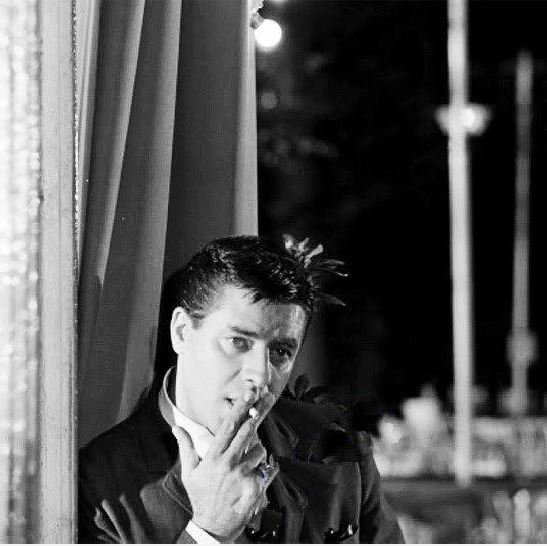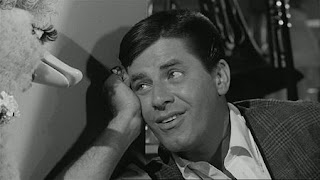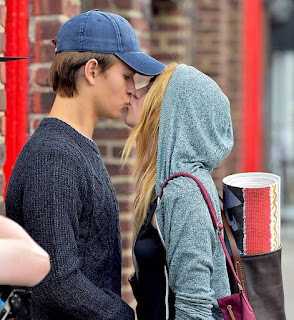Marilyn Monroe's comic style soothed the nation's fears, while reflecting the 1950s "populuxe" style in design, which spoofed consumption and laughed at fears through a populist version of luxury. When Marilyn put on her Betty Boop character she was populuxe to the hilt. Marilyn didn't like Hemingway's masculine heroes. "Those big tough guys are so sick. They aren't even all that tough! They're afraid of kindness and gentleness and beauty. They always want to kill something to prove themselves!" Ralph Greenson was considered daring to take on Marilyn. Many psychiatrists wouldn't have treated her because of her suicide attempts. The suicide of a patient could destroy a psychiatrist's career. Greenson liked treating celebrities, and treated many famous performers, including Frank Sinatra and Vivien Leigh. Marilyn ranted not only against the people she claimed were persecuting her but also against anyone who acted in a way she considered to be against her interests.
Greenson decided at this point that Marilyn was at base an adolescent waif who acted irresponsibly, sulking or throwing tantrums when crossed. Marilyn had brought the nation's most famous acting teachers to heel; she had done the same to the nation's most famous athlete and its most famous playwright. Now she was facing down a famous psychoanalyst. Greenson tried to end her relationship with Sinatra, who had been his patient and whose neuroses he knew well. He also dismissed Ralph Roberts, her driver, masseur and friend, for he may have decided that Roberts, a vodka drinker, was enabling Marilyn. Greenson was exhausted by Marilyn and in December 1961 he brought Eunice Murray, a friend of his with some practical nursing experience, into Marilyn's life. Source: www.theguardian.com
We've frequently examined Carole Lombard as a feminist before her time, a quality she almost certainly inherited from her mother. But Lombard wasn't the only actress or celebrity to embrace feminism -- one can look back to the earliest silent stars such as Florence Lawrence and Mary Pickford for examples. The same can be said of Marilyn Monroe. Last year, Michelle Morgan released the long-awaited Lombard bio "Carole Lombard: Twentieth-Century Star." Now arrives "The Girl: Marilyn Monroe, The Seven Year Itch, and the Birth of an Unlikely Feminist" (which will be released on May 8, 2018) titled after her character in "The Seven Year Itch," telling the story of how that film transformed Marilyn Monroe from another Hollywood star into "The Girl" of modern times. Marilyn’s friend, the poet Norman Rosten, suspected that she would have been ambivalent towards feminism. ‘She had achieved the financial and legal gains (feminists) sought,’ Lois Banner reflects. ‘And she enjoyed her femininity, recognising its power over men.’ Banner identifies this stance as post-feminist. Lombard is rarely seen as an influence on Marilyn, though I'm certain she appreciated Carole's work. Jean Harlow, certainly regularly cited in that vein, was indeed a feminist. Source: carole-and-co.livejournal.com
Lois Banner's offering a new interpretation of the star's life which draws on feminism and the history of gender. It's certainly the case that Marilyn Monroe's story has been handled in the past by biographers and critics who don't share that perspective, including the novelist Norman Mailer and her ex-husband Arthur Miller. Mailer's book on Monroe is a drooling rehearsal of a particular species of male fantasy, while Miller's play After The Fall presents her as a monster. Banner isn't the first feminist to write about Monroe; she was beaten to it by Gloria Steinem, whose 1986 biography is a lovingly-crafted rescue fantasy. But "Marilyn, The Passion and the Paradox" (2012) by Lois Banner seems two-fold: to claim Monroe as a kind of pre-feminist icon, and to establish herself as the foremost scholar in a crowded field. Her Marilyn is difficult, ironic, insecure, bisexual; she's also clever - far from an original claim. Banner's biography dispels some myths about Monroe's childhood but the sheer quantity of detail is daunting, and her prose is sometimes excruciating. Source: www.independent.co.uk
Jeanne Carmen was a highly sought after pin-up model in the 1950's. Carmen appeared with Mamie Van Doren and Eddie Cochran in Untamed Youth (1957), and inspired the rock'n'roller to cover "Jeannie, Jeannie, Jeannie". All along the way, she had crazy adventures with all sort of artists (Eddie Cochran, Elvis, Frank Sinatra, Jerry Lewis, etc.) She was also a friend and confidant to Marilyn Monroe. George Jacobs, Frank Sinatra's long time butler and personal valet during the legendary Rat Pack years, states “Jeanne Carmen was a classic blonde starlet and pinup girl with one of the most perfect figures in Hollywood.” Sinatra “really liked Jeanne, whom he dated both when he was down, and after he was up again,” adding Jeanne -along with Marilyn Monroe- used Sinatra's complex at 882 North Doheny Drive in West Hollywood as a safehouse. Jacobs specifically states that Jeanne Carmen was Sinatra's “longtime on-off bedmate, who became Marilyn’s best girlfriend.” Source: jeannecarmen.wordpress.com
Jeanne Carmen (Queen of the B movies) claimed she supplied the shapely torso for the 1952 Esquire calendars and demanded $50,000 in damages from television comic Ken Murray for introducing another girl as the “calendar girl.” In June 1954, she was chosen "Miss Potato Chip of 1954." Marilyn Monroe confided to her friend Jeanne about her liaison with JFK: “Jeanne, you don’t aim high enough. All you care about is seducing another movie star and adding another notch to your garter belt. Jack Benny and Errol Flynn. I like to pursue bigger game… like presidents. Going to bed with Jerry Lewis is no big deal.” In 1958 columnist Harrison Carroll reported that “Sinatra, in Palm Springs for a fast two days before resuming work on Hole in the Head, found time to see Jeanne Carmen...” In June 1959 Jeanne was Frank Sinatra’s date at the Share Boomtown party at the Moulin Rouge. Guests included Dean Martin, Sammy Davis, Jr., and Milton Berle. In 1963 Jeanne Carmen moved to Scottsdale, Arizona, and married a stockbroker. They had three children, Melinda, Brandon James, and Jade Austin. Source: www.glamourgirlofthesilverscreen.com
In 1958 Frank Sinatra threw himself into a killing pace of movie-making (Some Came Running, Kings Go Forth, A Hole in the Head). All of Frank’s work catapulted him to number one among the ten biggest money-making movie stars in 1958, who included Glenn Ford, Elizabeth Taylor, Brigitte Bardot, Jerry Lewis, Rock Hudson, William Holden, James Stewart, Yul Brynner, and Marlon Brando. Those close to Sinatra claimed that he actually fell in love with Marilyn after his divorce from Ava in 1954. “He was still in love with Ava,” Dean Martin said. “But he also loved Marilyn in a different way. Frank was capable of loving two women at the same time.” Gangsters had always been drawn to Dean Martin, who diplomatically but definitively rebuffed them. Jerry Lewis never, unlike Sinatra, entered into business ventures that bore the spoor of mob money, and he was never forced to testify about organized crime before an investigatory body.
The women who passed through Lewis' life are cast by his words more like mother figures than sex partners. Lewis offered the “women wanted to burp me” line as a way of undercutting his boasts of sexual conquest but it reveals his shaky self-image, showing just how strongly his promiscuity was a compensation for his childhood feelings of inadequacy—he slept around because his mother hadn’t shown him sufficient love. Patti saw her husband’s mix of volatility and neediness as a manifestation of his poor self-esteem. In part, she recognized his distaste for competing with their brood of boys for her attention and affection: “I felt his jealousy of the love I lavished on the boys. He was not predisposed to share me. At times, Jerry seemed unreasonable, but he needed a portion of child love along with adult love.”
Jerry could be syrupy and sentimental, composing elaborate paeans to Patti (“Just ’Cause I Love Her,” he entitled one that ran nearly fifteen hundred words; in another, he described her as “the first human being that has ever cared about me”) and smothering her in gifts of jewelry, perfume, and clothes. “When we had a crisis, Jerry simply ignored any unpleasantness,” Patti said. Even when he was steely toward her, Jerry couldn’t stop seeking her approval and affection. —"King of Comedy: The Life and Art of Jerry Lewis" (1997) by Shawn Levy
Jeanne Carmen was a highly sought after pin-up model in the 1950's. Carmen appeared with Mamie Van Doren and Eddie Cochran in Untamed Youth (1957), and inspired the rock'n'roller to cover "Jeannie, Jeannie, Jeannie". All along the way, she had crazy adventures with all sort of artists (Eddie Cochran, Elvis, Frank Sinatra, Jerry Lewis, etc.) She was also a friend and confidant to Marilyn Monroe. George Jacobs, Frank Sinatra's long time butler and personal valet during the legendary Rat Pack years, states “Jeanne Carmen was a classic blonde starlet and pinup girl with one of the most perfect figures in Hollywood.” Sinatra “really liked Jeanne, whom he dated both when he was down, and after he was up again,” adding Jeanne -along with Marilyn Monroe- used Sinatra's complex at 882 North Doheny Drive in West Hollywood as a safehouse. Jacobs specifically states that Jeanne Carmen was Sinatra's “longtime on-off bedmate, who became Marilyn’s best girlfriend.” Source: jeannecarmen.wordpress.com
Jeanne Carmen (Queen of the B movies) claimed she supplied the shapely torso for the 1952 Esquire calendars and demanded $50,000 in damages from television comic Ken Murray for introducing another girl as the “calendar girl.” In June 1954, she was chosen "Miss Potato Chip of 1954." Marilyn Monroe confided to her friend Jeanne about her liaison with JFK: “Jeanne, you don’t aim high enough. All you care about is seducing another movie star and adding another notch to your garter belt. Jack Benny and Errol Flynn. I like to pursue bigger game… like presidents. Going to bed with Jerry Lewis is no big deal.” In 1958 columnist Harrison Carroll reported that “Sinatra, in Palm Springs for a fast two days before resuming work on Hole in the Head, found time to see Jeanne Carmen...” In June 1959 Jeanne was Frank Sinatra’s date at the Share Boomtown party at the Moulin Rouge. Guests included Dean Martin, Sammy Davis, Jr., and Milton Berle. In 1963 Jeanne Carmen moved to Scottsdale, Arizona, and married a stockbroker. They had three children, Melinda, Brandon James, and Jade Austin. Source: www.glamourgirlofthesilverscreen.com
In 1958 Frank Sinatra threw himself into a killing pace of movie-making (Some Came Running, Kings Go Forth, A Hole in the Head). All of Frank’s work catapulted him to number one among the ten biggest money-making movie stars in 1958, who included Glenn Ford, Elizabeth Taylor, Brigitte Bardot, Jerry Lewis, Rock Hudson, William Holden, James Stewart, Yul Brynner, and Marlon Brando. Those close to Sinatra claimed that he actually fell in love with Marilyn after his divorce from Ava in 1954. “He was still in love with Ava,” Dean Martin said. “But he also loved Marilyn in a different way. Frank was capable of loving two women at the same time.” Gangsters had always been drawn to Dean Martin, who diplomatically but definitively rebuffed them. Jerry Lewis never, unlike Sinatra, entered into business ventures that bore the spoor of mob money, and he was never forced to testify about organized crime before an investigatory body.
The women who passed through Lewis' life are cast by his words more like mother figures than sex partners. Lewis offered the “women wanted to burp me” line as a way of undercutting his boasts of sexual conquest but it reveals his shaky self-image, showing just how strongly his promiscuity was a compensation for his childhood feelings of inadequacy—he slept around because his mother hadn’t shown him sufficient love. Patti saw her husband’s mix of volatility and neediness as a manifestation of his poor self-esteem. In part, she recognized his distaste for competing with their brood of boys for her attention and affection: “I felt his jealousy of the love I lavished on the boys. He was not predisposed to share me. At times, Jerry seemed unreasonable, but he needed a portion of child love along with adult love.”
Jerry could be syrupy and sentimental, composing elaborate paeans to Patti (“Just ’Cause I Love Her,” he entitled one that ran nearly fifteen hundred words; in another, he described her as “the first human being that has ever cared about me”) and smothering her in gifts of jewelry, perfume, and clothes. “When we had a crisis, Jerry simply ignored any unpleasantness,” Patti said. Even when he was steely toward her, Jerry couldn’t stop seeking her approval and affection. —"King of Comedy: The Life and Art of Jerry Lewis" (1997) by Shawn Levy































































